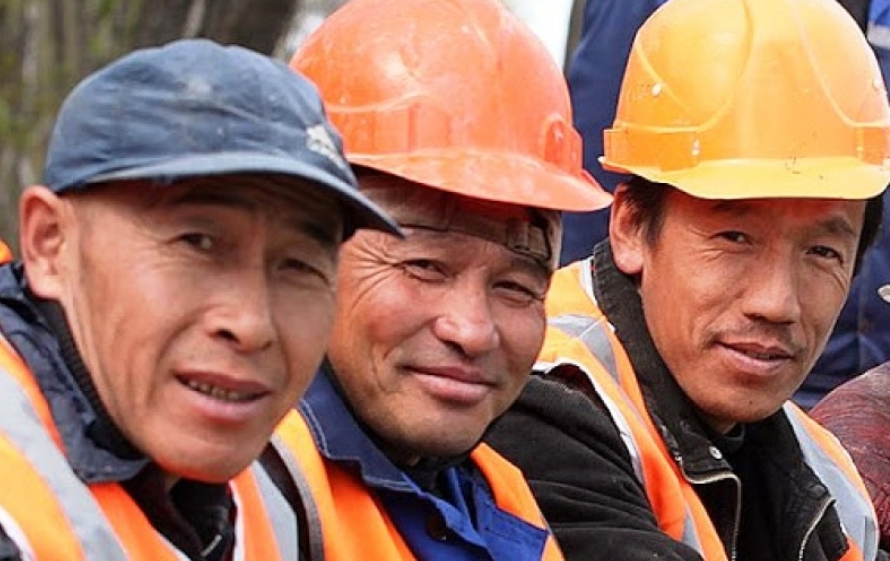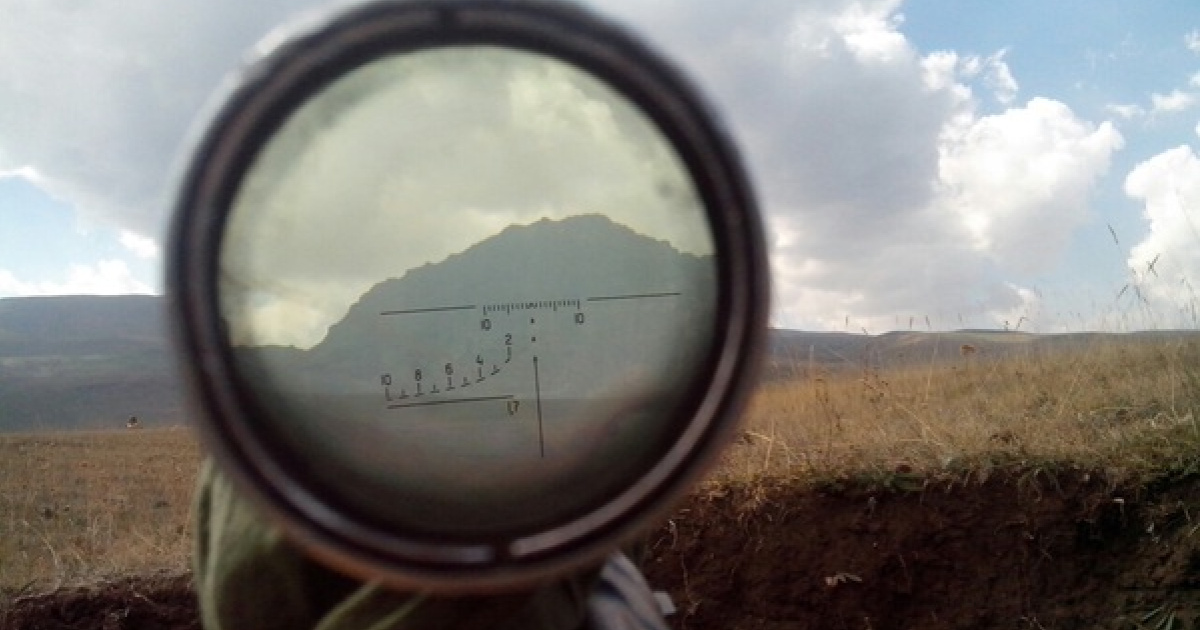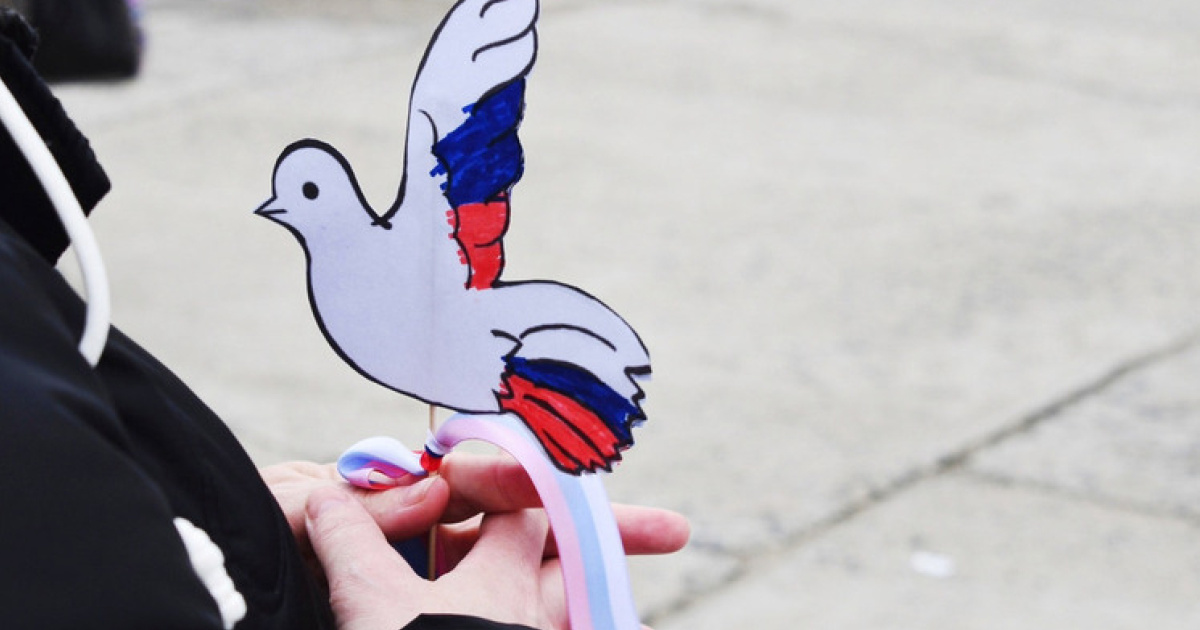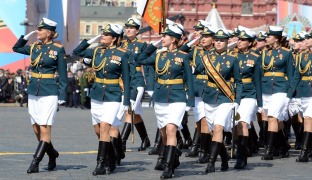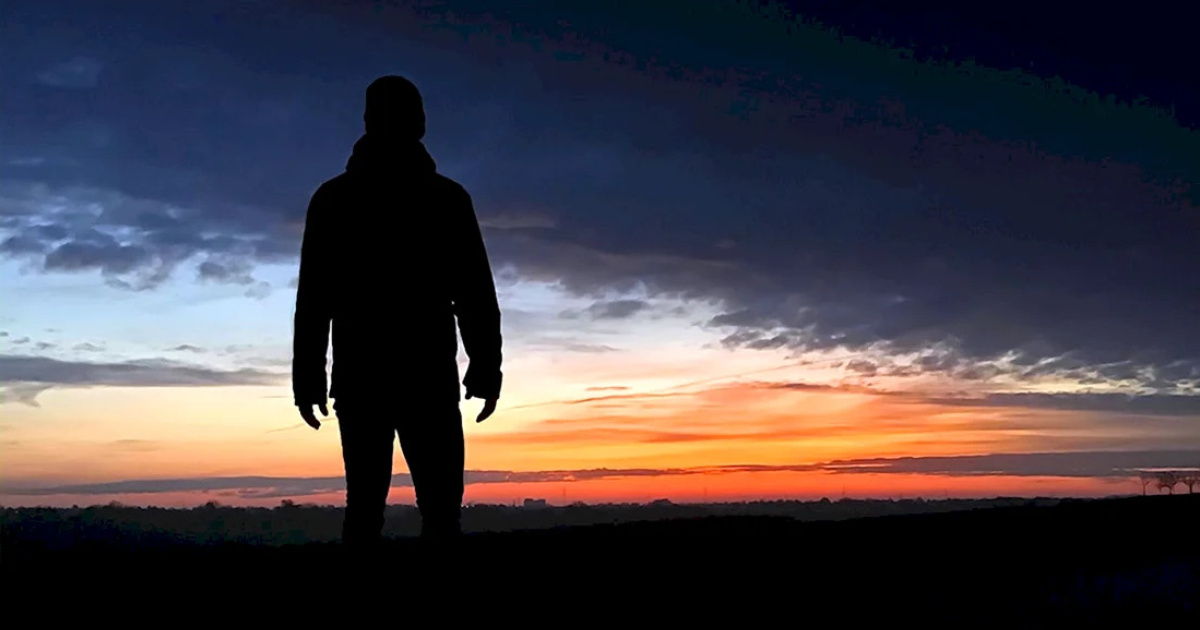The events of late August 2014 in Ilovaisk became the culmination of the first stage of the Russian-Ukrainian war. In all senses. It was the first open intervention of the Russian regular army, the first major defeat of the ATO forces, the loss of hope for the quick liberation of the Donbass.
Both the Russian army and the Ukrainian military leadership were blamed In the Ilovaisk tragedy. Three years have passed, and the reasons for the "mousetrap" are still unclear. According to official data, about 366 defenders of Ukraine were killed in the steppe near Ilovaisk, 429 soldiers were wounded. 128 people were captured and 158 were gone missing.
The volunteers of the Donbass Battalion Valeriy Marynets and Maksym Avramenko got on war in the same manner: they tried to join the army in the summer of 2014, they did not achieve anything in the military registration and enlistment offices, and signed up for "Donbass" in June when the National Guard battalions were formed.
The war began from Artemivsk for Maksym: "…We went to release Popasna after Artemivsk. There were two runs: the first one was unsuccessful, we lost several guys, and then we took the city with second shot. Then there were liberation of Lysychansk, battles for Pervomaisk, all in that period. And sometime during the fighting for Pervomaisk, a part of our battalion went to perform the tasks of Ilovaisk liberation, other part was stayed to carry on operations near Pervomaisk, I stayed near Pervomaisk. But then, at a certain moment, this was exactly when our troops in Ilovaisk were already surrounded, on the 20th, our deputy battalion commander arrived an gave an order so that we all gather and go to Kurakhove where the base was located at first, and we enter Ilovaisk itself on the 23rd".
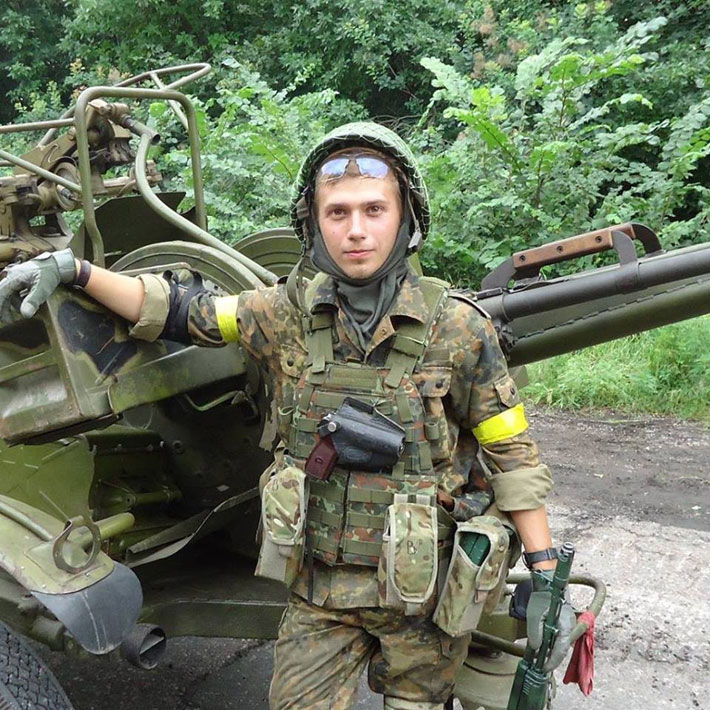
Valeriy Marynets was sent to Izium at first: "We entered Izium on July 1, then we immediately were sent to Sloviansk, Artemivsk, after Artemivsk, the main part went to Popasna, Lysychansk. I was with a small group, we went in a different way: Karlivka, Kuteynikove, Pisky, Krasnohorivka. Our group mainly assisted Right Sector, "Dnipro-1", the 93rd Brigade".
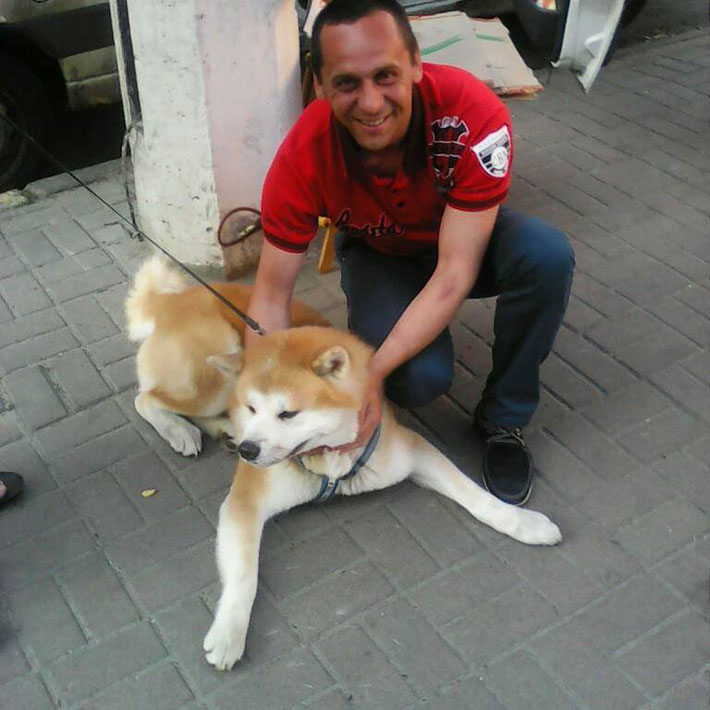
According to Valeriy, volunteers had difficulties with weapons and material support at the beginning: "We were given only small arms by the National Guard. The rest: BTRs, BRDMs, Shmels — it was all retaken from separatists. The last troop arrived in ATO on about the 17th of June, and they had already brought AA mount or two AA mounts (23mm, twin-barreled), the RPK. Bulletproof vests were given to us, helmets were brought to us already there, in the ATO zone. Bulletproof vests were given, but bulletproof vests were in fact so so… our first bulletproofs were Ukrainian, which made a bad showing in action. Not because they were punched, but simply their design is not very convenient. You run, just bend to shoot — it was opened on the sides. It was with Velcro straps which became clogged with grass. But then the volunteers started to bring us food and good bulletproof vests. I bought the uniform at my own expense. Well, they gave one "glassy" when I went to the ATO zone. And I bought myself two uniforms at my own expense before that. Sleeping bag, reflex sight — all was bought at my own expense. Volunteers brought a better English uniform already in the ATO zone".
Valeriy went to Ilovaisk with the first part of the battalion, on August 18; Maksym — on August 23… According to Maksym, the largest concentration of Russian troops was at the time in the Donetsk oblast, there was constant artillery shelling on the other side of the border: "The border is not far away from there, so they had all the opportunities to normally shell from a heavy-gun armament. They mortared us. Mortar was the most innocuous of such shelling at that time. Shelling with a heavy-gun armament or multiple launch rocket system was much more serious".
In the mousetrap
The fighting in Ilovaisk continued until August 29. Valeriy described what happened: "We went there on the 18th, occupied it practically without a fight. There was a little exchange of fire. We went to storm the second part of the city on the 19th. But it turned out that the forces were not equal. There were 120 of us, no one came to help us. We waited for Azov, but… "Dnipro-1" came, there were about 30 people, but it was already on the 23rd-24th. And there were 120 of us on the 19th, that was all. And we went to storm the second part of the city. As I later learned from the separatists, there were 150 of them there, and 350 more people came up with Motorola from Khartsyzsk in the process of fighting. They came up with BTR, Nona, SPG. We had to withdraw, of course. We withdrew. We had two missing in action, four killed and 26 wounded. As the separatists later said, they have 55 people only killed".
The situation became even tenser closer to the 22nd: "Then there was very serious shelling on about the 22nd… We were informed already on the 24th that we were surrounded, that Russians crossed the border and we were blocked by the Russian regular troops. But we held on. There was an order on about August 29 to go out into the green channel, the Russians gave us a green channel, and we formed a column and went".
When the troops began to disentangle, Russians started to shell them in violation of the requirement on the "green channel": "Russians began to bomb. Not targetedly, but along the road. We drove only a kilometer away from Mnohopillia village, and they began to precisely shoot the column with ATGMs and tanks. Some people dismounted, began to fire at the Russians who had entrenched themselves along the road and began to shoot the column with small arms. Tanks, BMD, IFV were in the village. In short, the column was shot up almost completely, all equipment was destroyed".
Valeriy received a bullet wound in the head during the disentanglement and miraculously survived: "When we went in the column through the "green channel", the bullet broke through the armor, the CIT armored vehicle and flew into my temple. I thought it flew away, my head was swollen at once, there was a lot of blood, but it turned out that it was just stuck in the bone. I have a friend with a call sign "Shaman", he jumped in the bus, threw me off the bus, and when he was already jumping out, a tank took a shot in the bus. He was badly bruised".
After the column destruction, those who survived made their way on foot to Krasnosilske village and captured it and the Russians who were there.
"We captured the Russian military — paratroopers and tankmen of the Ulyanovsk Tank Brigade. We got in contact with our artillery which stood in Starobesheve — it was about 20 kilometers from us. We gave the coordinates and asked: give us a chance to get out of there. They told us that there was no order, and so no one helped. An order to surrender came to the armed forces in the evening of the 29th, they took the wounded. We entrenched ourselves".
Volunteers continued to hold out for another day.
"About 17 or 14 people from the "Kryvbas" Battalion of the AFU or Kirovohrad special forces stayed with us. The guys said: "we do not give up, we stay with you", and they stayed. We held out for another day, but there simply could not be any way to hold out, there was nothing to shoot back. Tanks drove and shot us like in the shooting club. They put 28 SPGs 10 kilometers from us, and we were shot from there, there was not a single whole house left in this village, everything was crushed and burned. We surrendered the next day, after 36 hours of defense. We were told by the radio: if you do not start giving up after 5 minutes, we will start shooting your wounded. We surrendered...".
"When the ammunition was almost over, and the condition of our wounded was at the limit, an agreement was reached (we had already had their prisoners of war from the Russian Federation at that time): we exchange their prisoners of war so that they will lead us to our lines. They constantly bargained with us to withdraw the regular armed forces and leave the volunteer battalions. But it did not work out. As a result, it turned out that all of us, from all directions, were driven to a certain place, it was their prisoner of war cage, we spent the night there from August 30 to August 31, and the distribution was on the 31th. They loaded the wounded into KAMAZs and sent them one way, the armed forces and volunteer battalions left with another column, and a slightly different fate was prepared for the "Donbass" Battalion. Subsequently, the regular parts of the Russian army came for us, we were handed over to the separatists. As far as we heard from the conversation, we were just sold for a large sum. They sold us, we were loaded into trucks and taken to the Donetsk SBU. I was in captivity in the Donetsk SBU from August 31, 2014 to December 26", - Maksym tells about the circumstances of captivity.
In the captivity
The prisoners lived in the basement which was intended for the bomb shelter in the building of the Donetsk SBU. "They said that they would shoot us all, but we would be tried by the people's tribunal of the "DPR" for our crimes at first. All were searched, all were put down into the basement, someone was not so much beaten, but everyone got in the teeth, they beat just anywhere. I was knocked the dental bridge out. They hit with something and knocked out the dental bridge. The volunteers were kept in the basement, and the prisoners of the armed forces - on the first floor. The worst thing was not that they beat us —they beat, of course, but this can be experienced. But the hunger was very [unbearable]. 114 people were sitting. There was simply nothing to eat from. We removed the ceiling lights, washed and ate from them. There were some racks, and we slept on the racks. There was not enough place, we slept by two people by turn".
In addition to the fact that the prisoners were beaten from time to time, they were also subjected to psychological tortures - "executions": "They tied our eyes, took us to some room, pull back on the buttstock and imitated execution, they could simply shoot in the air".
In October 2014, the prisoners were divided: some were left to stay, and 70 people were sent to work in Ilovaisk. According to Maksym, those remaining in Donetsk played the role of hostages: if someone escaped from Ilovaisk, those who stayed in the basement of the SBU would be shot. In addition, the militants tried to form "assault teams" from those people to attack the Donetsk airport, where fierce fighting was happening at that time. Volunteers refused to fight against their fellow soldiers, after what they were beaten again and again.
Valeriy was among those who were sent to Ilovaisk.
"In Ilovaisk, we stayed in the basement of the burned police station. We were guarded by 76 separatists. There were no Russians, only locals from Donetsл, Luhansk oblasts, from Kharkiv. There were also people from Ternopil and Vinnytsia, who fought for the separatists".
In Ilovaisk, the prisoners witnessed armed clashes between the various armed formations of the invader: "They still had internal squabbles. I was chopping firewood when I saw cars with large-caliber machine guns, armed people dressed as Russians, with chevrons... they began to disarm everybody. “Who are you? - I am a prisoner of war. - Are there a lot of prisoners? - Well, yes, there are some. - Where are you staying? - In the basement. - Go to the basement, close the door and do not go out”. They did not touch us then. But usually, these internal squabbles were ridiculous. Well, they seem funny now. One time, Ossetians seized us and cried: "Oh, prisoners of war! Come on, let us shoot a dozen now". And also: "Why did you come here?!" As if we came to their land. Volkswagen Boro was parked nearby. One side was wrecked, the other one was quite in a good condition. And they seized the commandant's office for this Volkswagen Boro. When they saw it, they shouted at each other: - What did you look at? It is wrecked! You cannot see that it is crashed from that side!"...
In addition, Valeriy managed to communicate with the personnel of the Russian military: "We talked with the Russians, their regular troops. The majority did not want to talk. But some even apologized: "Sorry, guys, we perfectly understand that we are invaders, but we were forced to fight. If we disobey the order, we will be deserters". They told us that some bodies of the Russian military were not even buried: "they are still in the planting, we were banned from taking them. They were “deserters”. If some corpses were brought back, their families were paid some compensation, and those who are lying in the planting are "missing people" and "deserters", their relatives will not get anything".
They said that they were told they were going to mimic warfare. "We were just shocked when we were brought to Ukraine". They even told that the soldiers had a riot and its leaders were simply shot in the planting"...
When prisoners were taken to work, they managed to communicate with Ilovaisk residents. Valeriy notes that the locals basically supported Ukraine: "The local population helped us a lot. I think that the majority was on our side. There were also those who insulted and shouted at us, but such cases were few. Once they brought us to a nine-story house, not far from the railway, which divided the town into two parts - ours and the separatist one. And the separatist side of the house was shelled with artillery. We were brought there to load the garbage. Russian journalists ran to us and began filming, people cried: look what you have done! We, as prisoners of war, did not have the right to resent or say anything, but I quietly said to the woman nearby: "I'm sorry, but we stood on the other side, the opposite, and such a trajectory is not realistic at all". She replied me quietly: "It is necessary". People continued to cry, we listened to them with our heads bent. But after the journalists left, they gave us food, hats, mittens, socks, jackets... We took those things and, of course, later shared with the others".
The captive volunteers spent 2.5 months in Ilovaisk. The other part of the prisoners continued to stay in the Donetsk SBU cellar...
Motherland’s flag and freedom
New Year was approaching, the process of exchanging prisoners was gradually moving, but it did not affect the Donbass battalion. And then several groups of Ilovaisk prisoners, independently of each other, decided to escape on New Year’s eve.
"There were many groups. Friends from one division agreed plans among themselves. But we had an appointed leader, who was in charge for negotiations with the separatists. All these groups agreed on their own, but it was clear that they planned to flee. The leader tried to keep everyone together, because we were warned: one runs away - ten will be shot. We decided that if we are not exchanged, the best option is to run on New Year’s eve, when the separatists are all under drugs or drunk. Maybe it is good that we were exchanged, because there was very little chance to get out of there. We wanted to disarm everybody, to take the IFVs (we knew where they were parked) and to break through to Donetsk, rescue our people who stayed there, and together get to the Donetsk airport or to Pisky. We understood that very few people would survive this, but it would be a big commotion, and it would benefit the defense and Ukraine".
According to Maksym’s testimony, a similar attempt to escape was planned by those who stayed in Donetsk: "We agreed that if we are not exchanged, we will organize sabotage on New Year's eve. We would take weapons, steal the car and get to the airport. What is most interesting, the guys from Ilovaisk thought the same way, although there was no connection between us. We were allowed to communicate with our family members only twice. The first time was illegal - one of the militants, who took us out to go to bathroom, just gave his phone to every prisoner to call their families. And the second time was in October or November, when the OSCE mission came to check how prisoners of war were kept".
Maksym described how he managed to steal Ukrainian flag from the militants, the same one which was removed from the building of the SBU.
"In October, there was a very strict regime, but we were still taken to work. The militants placed Ukrainian flag, taken from the SBU, on the doorstep at the entrance to our building. We were forced to step on it. Naturally, our guys stepped over it, for what they were often beaten or shot in the leg. In one of the shifts, when we were taken to work, I took advantage of the moment when the warder was distracted. The flag was lying in a corner, rumpled and dirty. I picked it up, did my work and went downstairs. I hid it in technical premises, because we were searched for prohibited items. And when volunteers brought us some warm clothes, I took a jacket, a needle and sewed a flag into the lining. And on December 26, I took it to the free territory of Ukraine".
A large exchange of prisoners took place on December 26. Fortunately, it was not necessary to escape. All 112 prisoners from the Donbass battalion returned to their homes, except Andriy Skachkov, a native of Donetsk. As luck would have it, the same flag, saved from the Donetsk SBU, took part in Andriy’s liberation.
"Skachkov was imprisoned for 364 days. The biggest struggle was for him, because he was born in Donetsk, and others were very offended at the locals, considered them traitors. I handed the flag over to the Museum of the Armed Forces in the House of Officers. We fought for Andriy for a year, but all was in vain. And then, on the National Flag Day, there was an exhibition of military flags, and my flag was also taking part in it. I was invited to tell its story. The president attended the exhibition as well. When he came up to listen to our story, I said that on this flag, which was taken out of the Donetsk SBU, all the signatures of the survivors of Ilovaisk battle were gathered, except for one. That soldier was still imprisoned, and the entire battalion was ready to give up state awards for the sake of him standing with us at Mikhailivska Square on August 29 [2015]... And Andriy was exchanged in two days. Now he lives in territory of free Ukraine".
After the captivity, these people had different fate.
Valeriy did not pass the medical commission and had to leave the Donbass battalion. He was awarded the Order "For Courage" of the third degree. Now he is training to be a lawyer.
Maksym continues to serve in the army. We recorded his story in Kyiv, just on the day when he, after another vacation, went to his military unit...
Yuriy Izotov, specially for OstroV
